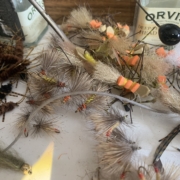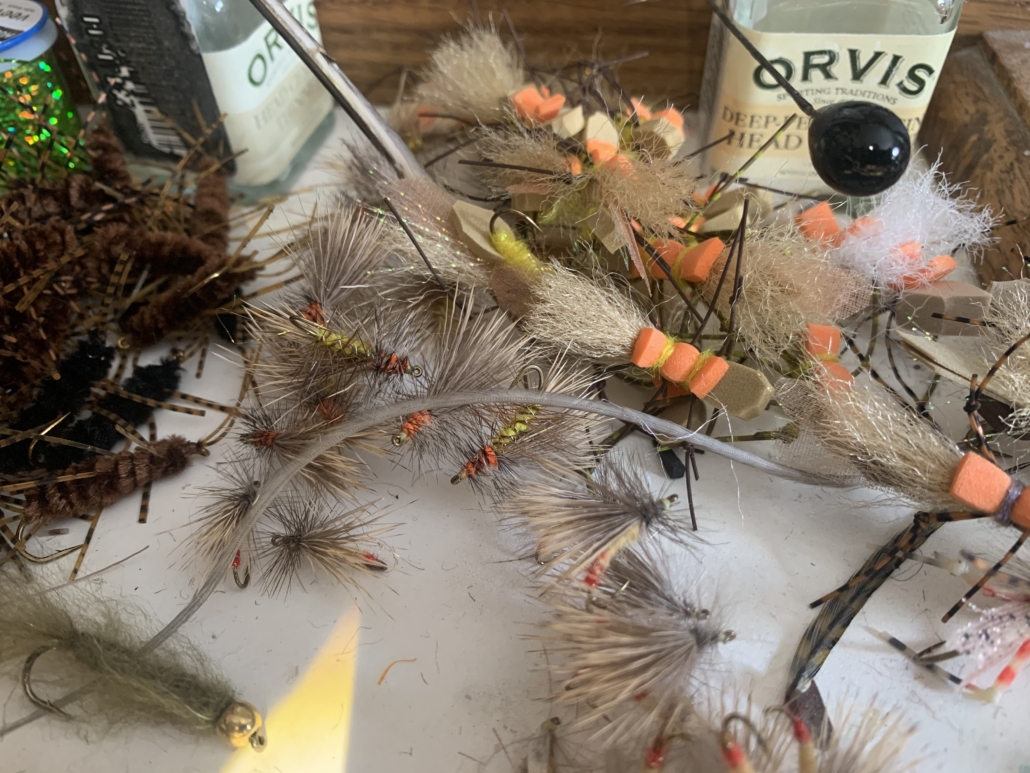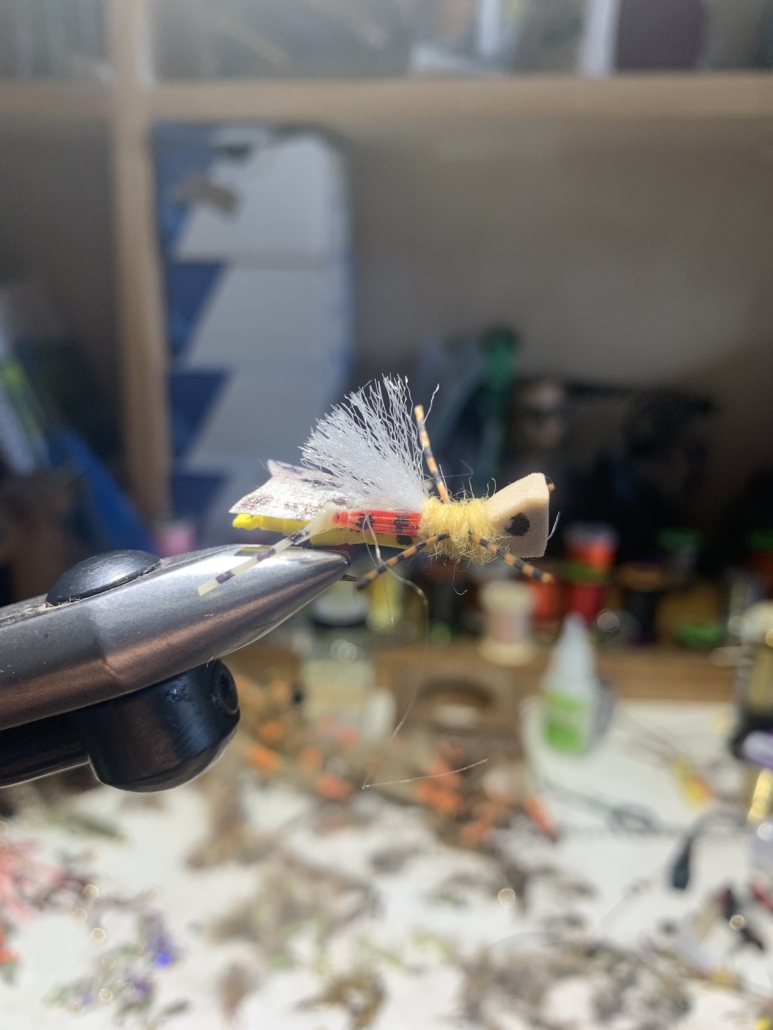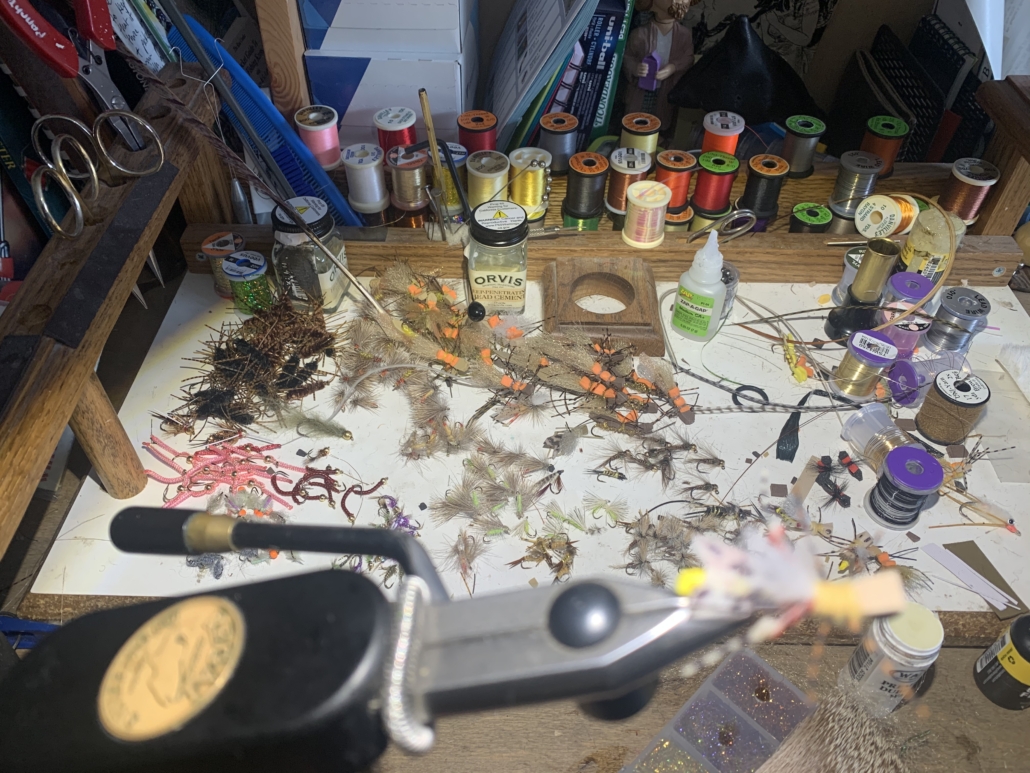Fly Tying Vises…..
I’ve been tying flies for over 30 years and have tied on a number of vises ranging from the cheapest of the cheap to the flagship (and expensive models) brands. I thought I’d take a minute and compare a few of the most popular fly tying vises on the market for anyone thinking about a purchase.
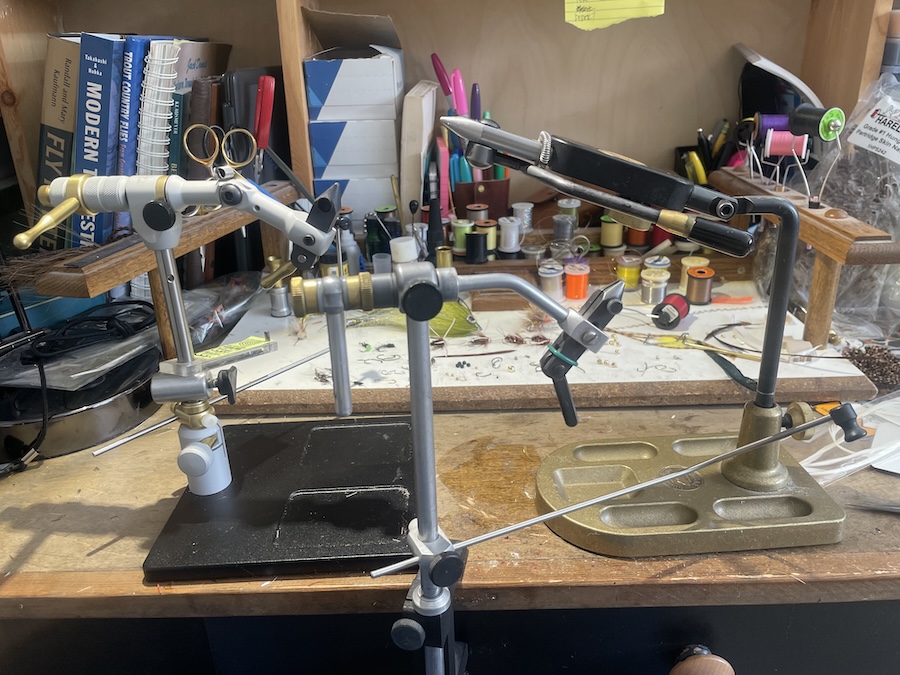
A little background. I began tying flies on a Thompson model A vise. This was a very basic fly tying vise; one that I’m sure most folks who have been at the tying game for a while began on. It was inexpensive, solidly built and was a C clamp vise. I used it for years. When I was in college and had a little money saved up, I went to the local fly shop (shout out Evening Rise! even though you don’t exist anymore) and bought the best vise I could afford, a Renzetti Traveler Vise. This thing was the bee’s knees! I used it for years before retiring it (sort of). Eventually switching to Regal’s Medallion stainless steel pedestal vice. Despite liking both the Renzetti and Regal, I still continue to tie thousands of flies each year with my Regal.
Below are my thoughts on my favorite vises I’ve used. I have also tied on HMH, Dana Kings, and others, but at the end of the day I like Renzettis’ and Regals the best. Hopefully you’ll find my thoughts useful if you’re in the market for a new fly tying vice.
Let’s compare- The Regal is a super simple (and elegant) vice. You squeeze the lever, the jaws open, put your hook in a tie. Simple and effective. Put a size 22 dry fly hook in, tie a fly, then put a size 2 streamer hook in. No adjusting anything and the Regal holds them both well! It does struggle a tiny bit with the big hooks, but works fine. Although it’s not a true rotary, the vise rotates 360 degrees, and the angle of the jaws can be changed. This is helpful for turning your fly to look at the underside. I opted for then stainless steel jaw. These have more of tapered point (useful when tying small flies) and are more durable. I’ve used my Regal for years now and it doesn’t show signs of slowing down. They call them the “Bulldogs” for a reason. I think it excels for the trout fly tier.
Next is the popular Renzetti Traveler. It is a true rotary vise. This is great if you want to tie rotary style (ie spin the vise while holding material). It’s also nice when tying flies like Clouser minnows, gotchas etc where materials are tied into the underside of the hook. The vise jaws are strong and hold hooks, both large and small securely. You do need to adjust them depending on hook size, then use the cam level to clamp the hook in. It definitely does a better job with large streamer and saltwater hooks than the Regal. In fact, when I’m tying saltwater flies, I use mine. The only minor grievance I have is that it uses a small O ring on the cam. Over time, it wears out requiring a replacement (not a big deal, you can order replacements from Renzetti or probably find one at your hardware store. My Traveler is a C clamp version, is over 25 years old and aside from a replaced O ring, works great!
Another vise I’ve used is the Renzetti Master vise. I bought this last year after eyeing it up for a while. While I was always extremely pleased with my Regal, I couldn’t help but wonder what Renzetti master vise was like. Despite costing hundreds of dollars more, I came to conclude it is essentially a Traveler but more luxurious. The rotating handle has ballbearings, making for a smoooooth rotation. It doesn’t have an O ring on the cam and is built tough! Like the Traveler and all Renzetti vises, the jaws can be adjusted to hooks size before clamping. Other features include the ability to adjust the angle the vise jaws are at, a built in materials holder, a large, heavy pedestal base and it is able to hold extremely large salt hooks down to size 28 dry fly hooks (why anyone would tie on such tiny hooks is beyond me!).
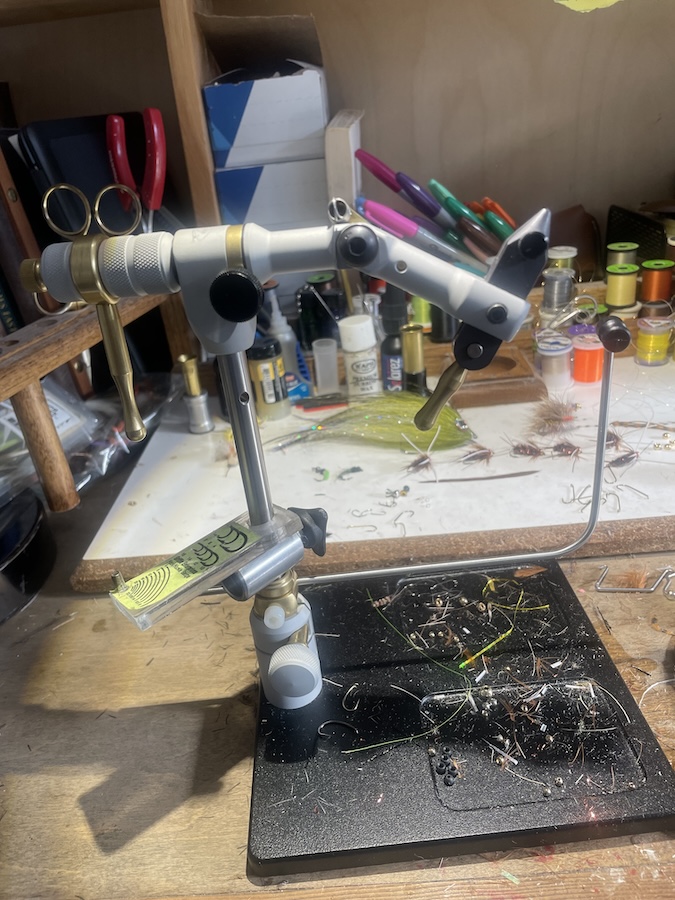
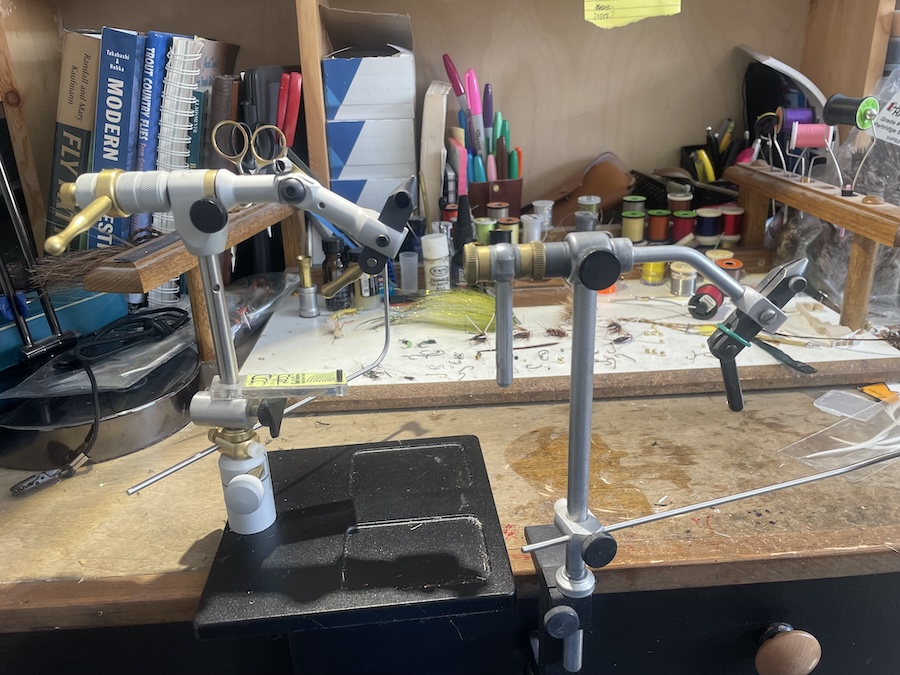
In the end, I keep using my Regal to tie the vast majority of flies on. I like the simplicity and bulletproofness of it; squeeze the handle, put hook in and tie. I do use the Renzetti traveler when tying saltwater flies that are size 2 or larger. I love being able to turn the fly upside down to tie in materials on the underside of the hook and everything staying straight. I ended up getting rid of the Master Vise. While I thought I’d like the adjustable vise angle option and material clip, I didn’t. There was no reason to change the angle of the jaws and I found the material clip got in my way. Also, I’m not a big rotary tier. If I was, maybe I’d feel differently. I think this vise is fantastic (and the best of the three) for those that tie nothing but large saltwater flies, but otherwise it’s really not that different than the lower priced Renzettis. I think the Renzetti Traveler is the best all around fly tying vise on the market. It’s what I would recommend to anyone wanting a good, dependable vise at an affordable price. I continue to use my Regal to tie thousands of trout flies. I like the classy, no-frills dependability of it. Hope this helps anyone who is considering one of these great vises.

